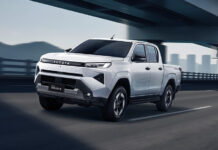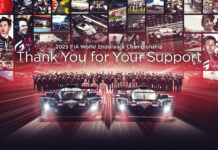
 By MARK DEVOLDER
By MARK DEVOLDER
Los Alamos
Mr. McQuiston passed along an article (link) he read in Forbes magazine dated August 2023 (updated December 2023).
The article indicated the following:
Drivers currently pay an average of $1,668 for their car insurance policy, according to the online insurance agency Insurify. New Mexico, Nevada and New Jersey are seeing the highest annual rate increases in 2024, with prices soaring by 38 percent, 36 percent and 34 percent respectively.
Experts point to four main reasons for the spike in car insurance rates:
- Costs associated with driving are higher.
- More cars are on the road—which means more accidents.
- Auto theft has surged.
- As catastrophic weather events multiply, there’s an uptick in the number of damaged and totaled cars.
I believe that the preceding reasons for the spike in car insurance rates fail to address some root causes which include the following:
- Inadequate initial driver training
- Lack of refresher driver training
- Driving distractions/Inability to concentrate on the task of driving (for example, I-phone usage, talking to passengers, applying make-up/combing one’s hair, not knowing a destination in advance of a trip, fumbling around for a food item/beverage, stresses associated with living in challenging times, etc.)
- Poor planning (running late) that leads to rushing
- Deficiencies with eye – motor control coordination
- A lack of understanding of how to use available space
As I drive around Los Alamos County, I continually see the following errors on the part of some drivers (that is, pilot errors if you will):
- Tailgating – I find it very irritating when another driver is less than a half car-length behind my vehicle. It is much like someone kicking the back of my seat when I am sitting on a commercial airline flight. I learned in my driver’s education course that a ball bouncing out in the street is usually followed by a child trying to retrieve it. In Los Alamos, we have deer. If I slam on my brakes for a child or a deer, a tailgating driver and myself are going to end up talking with the police, our insurance companies and maybe some medical doctors and/or lawyers. In driver’s education I was taught that a minimum of one car length of space is needed for every additional 10 miles per hour of speed (more space is needed if there is inclement weather).
- Inability to center a vehicle in a traffic lane – I went out one afternoon recently and noticed no fewer than four compact cars where the drivers were not in the middle of the traffic lane for extended distances. A traffic lane affords approximately 2 feet of space on either side of a vehicle. Often, drivers will consistently drive 6 inches or less from the edge of a traffic lane. Or drivers may wander around within a lane. In addition, drivers perform even worse on curved sections of roadway and they may wander into an adjacent traffic lane or bike lane. When I took driver’s education in high school we were warned about “low-aim driving.” This means that the driver is looking at the hood on their vehicle instead of looking far down the road. I often wonder if another driver is going to hit my side view mirror when I drive around the curve on Diamond near the Speedway service station.
- Running stop signs and red lights – It is frustrating to me when drivers treat 4-way stop sign intersections as if the intersections were posted with yield signs. When approaching an intersection, it is generally a good idea to slow down a little – particularly in inclement weather. Perhaps some drivers think they are going to win some kind of a prize if they don’t slow down or they can get through an intersection before the traffic light turns red. It is even worse when a driver sees that a traffic light is red and they drive through the intersection anyway.
- Parking on the wrong side of the street for the sake of convenience – When a driver parks on the wrong side of the street it will be necessary for the driver to cross in front of on-coming traffic. This can lead to a head-on collision. If there is a parked car in front of the driver, they can’t initially see any on-coming traffic when they pull away from the curb. It is worse at night when a car parked on the wrong side of the street pulls out in front of you and temporarily blinds you with their headlights.
- Poor passing habits – It irks me if a vehicle zooms up behind me, pulls out rapidly in to the adjacent traffic lane and then cuts in directly in front of me. It leaves me no opportunity to react in an appropriate manner. It helps if a driver plans their passing maneuver and allows me some breathing room.
- Speeding – Although LAPD looks for speeding vehicles, drivers who speed bother me less than the five preceding issues. An exception is when someone comes speeding up behind my vehicle without slowing down or changing lanes. Another exception is a driver who speeds up as they approach an intersection.
Many people have been raised in and learned how to drive in crowded cities. It becomes a contest to find an opening in a traffic lane or a parking space for that matter. Some drivers have developed the dangerous and useless habit of trying to “get there first.”
Many Americans have a fundamental problem with the concept of “space” or stand-off distance. If you hold up your hand and ask an American “How many?” They will typically reply by saying “Five.” If you ask someone in Japan the same question, they will respond by saying “Ten.” Their interpretation is that the whole hand counts as one, there are five fingers on a hand and there are four “spaces” between the fingers. If you look at a Japanese garden, the space between two objects is just as important as the objects (for example, a sand-covered space between a rock and a plant). Then there are some cultures where people position themselves 2 inches away from your nose when they are speaking to you. This can be rather disquieting from the perspective of needing a certain amount of “personal space.” Drivers need to remember this 100 percent of the time when they are following or passing another vehicle.
Manufacturing jobs in America are fewer than there used to be decades ago. Many people in manufacturing jobs understood the concepts related to fits and clearances as they apply to mechanical hardware. If something has a line-to-line fit, it is typically going to be difficult to assemble because the parts will bind against each other. The same goes for tailgating and passing another vehicle. As a driver, you might take some time to reflect on the job of an Air Traffic Controller. Their job is to provide a cushion of “space” around each and every aircraft in order to avoid a mid-air collision.
To save on my insurance premium, I periodically take a driver refresher course. As we age, our response times to normal and stressful events slows down. Vision can be affected adversely too. It takes more time to plan out trips. Laws and driving practices also change with time.
I wish the State of New Mexico would put more emphasis on refresher training for drivers. Once you get a driver’s license, no one comes along to verify that you are a safe/competent driver. I think that if a driver earned D’s and F’s in high school, they are probably going to exhibit “D-” and “F-quality” driving habits when they are out on the road.
I heard from one of my former colleagues at LANL that LANL management has become more concerned about driver habits because a pedestrian got hit by a motor vehicle near TA-55. If someone makes a driving mistake at LANL these days, they are going to have a conversation about the issue with a higher-level manager. Personally, I don’t think that is going to help very much. LANL gave up on providing Defensive Driver Training courses to workers decades ago. I know because I took one of the courses and then the courses were discontinued. I believe that monitoring LANL employee driving competency is just as important as the emphasis that LANL puts on substance abuse issues.



































